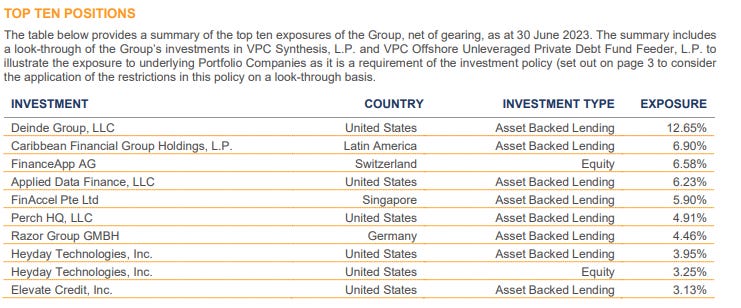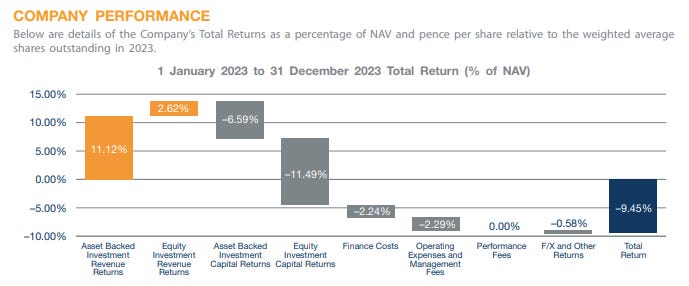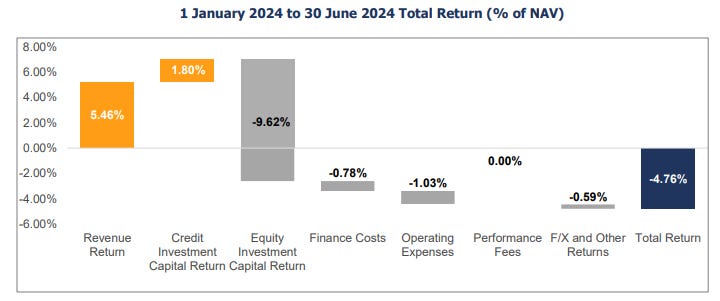The Results Round-Up: The week’s investment trust results
Diverse Income (DIVI) outperforms both the benchmark and peers; Henderson Opportunities (HOT) outperforms despite the distractions of a strategic review and the unwanted attention of a certain activist investor; Brunner’s (BUT) all-weather approach clocks up a double-digit NAV return; and Scottish American’s (SAIN) managers put their money where their mouths are after a tough year.

By Frank Buhagiar

Diverse Income Trust (DIVI) outperforms
DIVI beat all comers hands down over the latest half-year period. For all comers read the benchmark and the small-cap investor’s peer group: NAV total return came in at +4.9% compared to the Deutsche Numis All-Share Index’s +2.1% and the peer group’s +0.9% average return, while DIVI’s +5.3% share price total return topped the lot. Not bad going considering, as Chairman Andrew Bell points out, that “the share prices of smaller companies and AIM stocks remained under pressure.” Reasons cited include “persistent selling of UK equities by domestic investors, amid uncertainties over forthcoming tax rises by the new government, during the prolonged lead-up to the October Budget.”
The fund’s longer-term track record stacks up too. Over the 13 years and seven months since launch, the fund has generated NAV and share price total returns of +235.5% and +196.2% respectively, easily trumping the +190.0% and +176.1% NAV/share price returns of the peer group and +123.6% for the Deutsche Numis All-Share Index. No surprise then that the Board’s regular review of the Company’s strategy and approach concluded that these remained “relevant and appropriate”. Well, if ain’t broke. Shares closed unchanged on the day of the results at 94.6p.
Winterflood: “Top ten holdings represented 25% of NAV as at 30 November, with largest sector exposures being Financials (35%), Industrials (18%) and Basic Materials (10%). In July, shareholders will be able to elect to redeem shares at the next redemption point of 29 August 2025.”
Henderson Opportunities’ (HOT) heating up
HOT’s busy year included a strategic review, the drawing up of a scheme of reconstruction offering shareholders a full cash exit at NAV and/or the opportunity to roll into an open-ended fund and, if that wasn’t enough, the unwanted attention of activist investor Saba Capital culminating in a requisitioned general meeting that went in favour of the Board. Didn’t affect the full-year performance though: NAV total return came in at +17.1%, comfortably ahead of the FTSE All-share’s +16.3%. According to the investment managers, the outperformance mostly driven by the portfolio’s holdings in larger companies which offset a weak showing from the small-cap contingent.
As for HOT’s future, well that’s in the hands of shareholders who are due to vote on the scheme of reconstruction at two general meetings to be held on 21 February 2025 and on 14 March 2025. Question is, how will shareholder Saba vote? The results were good for a 1.5p rise in the share price to 229p.
Winterflood: “Small cap overweight (AIM stocks 33% of portfolio) has detracted over time (AIM underperformed FTSE All Share by 55% over last 3 years). Takeover activity aided performance over the reporting period.”
Brunner’s (BUT) all-weather approach
BUT not only clocked up NAV and share price total returns of +17.9% and +39.3% respectively, but the latest full year also saw the global fund win the ‘Investment Company of the Year – Global’ award from Investment Week and promotion to the FTSE 250 Index. Only blot on the report card was that NAV performance couldn’t match the +23.6% clocked up by the composite benchmark (70% FTSE World Ex. UK/30% FTSE All-Share). Although BUT had outperformed the benchmark in each of the previous five years, so was perhaps due a breather. Besides, as the portfolio managers point out, “Most of the underperformance is best explained at the stock level within the Financials and Technology sectors. Both of these important sectors roared ahead. Our holdings participated but did not keep up.” That’s largely down to the managers’ “balanced approach, but also our bias to prudency. This means that we always run the risk of underperforming in a cyclical rally, as happened this year, but we should be better protected on the downside in the event of a cyclical downturn.”
Chair Carolan Dobson adds “Ultimately, our ‘All-Weather’ approach does not mean chasing some kind of absolute return or constant outperformance of the benchmark – rather it means the pursuit of consistent performance”. And Dobson goes on to finish on “a high note” that, although many macroeconomic and geopolitical risks remain, “opportunities to invest in great companies continue to abound.” Market liked what it heard – shares added 5p to close at 1415p.
Winterflood: “Share price TR +39.3%, as discount moved to premium, despite no shares repurchased (aided by index inclusion). First-ever issuance £3.9m. Underperformance mainly attributable to stock selection within the Financial and Technology sectors. Portfolio composition 49% US, 27% UK, 20% Europe.”
Scottish American’s (SAIN) staying true
SAIN’s investment managers described the global equity income fund’s full-year performance as “mixed”. First the good bits, “growth in earnings across the Company’s portfolio was strong. The backbone is our investment in equities, where dividend growth was robust. Income from the property, infrastructure and bond portfolios was also solid. Together, these investments drove growth in the Company’s earnings per share, lifting it 7.6% above the prior year. This strong result underpinned another inflation-beating increase in SAINTS’ dividend to shareholders.” Followed by the not-so-good bits, “NAV growth of the Company lagged global equity markets, as measured by the FTSE All-World, by some way”: +6.1% NAV total return compared to the market’s +19.8%.
The relative shortfall “was due primarily to the more balanced approach that SAINTS takes to investing, and in particular our focus on companies with resilient earnings and income growth.” Problem is, “These were not the type of companies that saw the strongest rises in share prices in 2024.” The investment managers have no intention of deviating from their strategy though “We will stay true to SAINTS’ objective of delivering a resilient income that grows ahead of inflation, while also aiming to grow capital value. Our analysis of the investment portfolio suggests it is well-placed for this task.” And the managers are putting their money where their mouths are “We remain resolutely aligned with shareholders, investing alongside them as owners of SAINTS’ shares.” Investors adopting the wait-and-see-approach – share price was unchanged at 519p.
Winterflood: “Board remains confident in approach and believes discount is cyclical rather than structural. Board expects future market environments to lead to a reduction in ‘manufactured’ dividends or a need to sell assets, hence current income generation method is preferred. US underweight (43% vs. 70%) and Tech underweight detracted, as did quality and income factors. Property and bonds allocation detracted as well relative to equities. Infrastructure (3% of NAV) detracted as well (-3% TR).”















